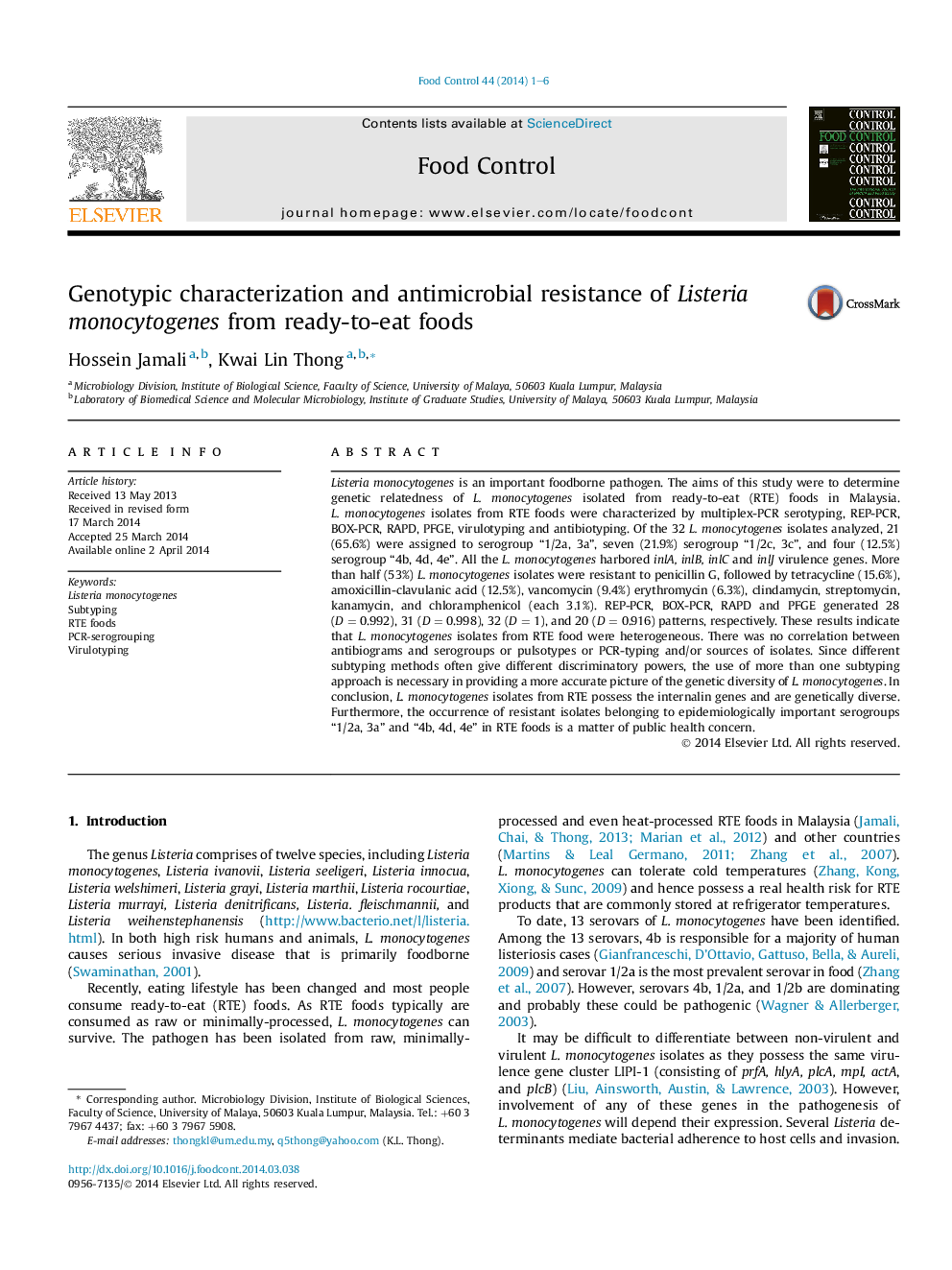| کد مقاله | کد نشریه | سال انتشار | مقاله انگلیسی | نسخه تمام متن |
|---|---|---|---|---|
| 4559329 | 1628418 | 2014 | 6 صفحه PDF | دانلود رایگان |

• Serogroup “1/2a, 3a” was the most common serogroup in RTE food samples.
• All the Listeria monocytogenes harbored inlA, inlB, inlC and inlJ virulence genes.
• PCR-RFLP of the inlA and inlC showed limited polymorphism.
• The L. monocytogenes isolates showed high resistance against penicillin G (53%).
• The L. monocytogenes isolates from RTE food samples were genetically diverse.
Listeria monocytogenes is an important foodborne pathogen. The aims of this study were to determine genetic relatedness of L. monocytogenes isolated from ready-to-eat (RTE) foods in Malaysia. L. monocytogenes isolates from RTE foods were characterized by multiplex-PCR serotyping, REP-PCR, BOX-PCR, RAPD, PFGE, virulotyping and antibiotyping. Of the 32 L. monocytogenes isolates analyzed, 21 (65.6%) were assigned to serogroup “1/2a, 3a”, seven (21.9%) serogroup “1/2c, 3c”, and four (12.5%) serogroup “4b, 4d, 4e”. All the L. monocytogenes harbored inlA, inlB, inlC and inlJ virulence genes. More than half (53%) L. monocytogenes isolates were resistant to penicillin G, followed by tetracycline (15.6%), amoxicillin-clavulanic acid (12.5%), vancomycin (9.4%) erythromycin (6.3%), clindamycin, streptomycin, kanamycin, and chloramphenicol (each 3.1%). REP-PCR, BOX-PCR, RAPD and PFGE generated 28 (D = 0.992), 31 (D = 0.998), 32 (D = 1), and 20 (D = 0.916) patterns, respectively. These results indicate that L. monocytogenes isolates from RTE food were heterogeneous. There was no correlation between antibiograms and serogroups or pulsotypes or PCR-typing and/or sources of isolates. Since different subtyping methods often give different discriminatory powers, the use of more than one subtyping approach is necessary in providing a more accurate picture of the genetic diversity of L. monocytogenes. In conclusion, L. monocytogenes isolates from RTE possess the internalin genes and are genetically diverse. Furthermore, the occurrence of resistant isolates belonging to epidemiologically important serogroups “1/2a, 3a” and “4b, 4d, 4e” in RTE foods is a matter of public health concern.
Journal: Food Control - Volume 44, October 2014, Pages 1–6